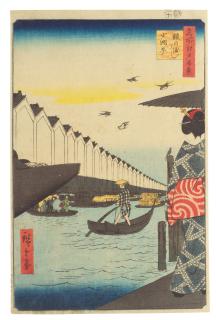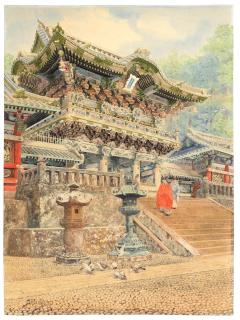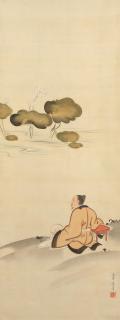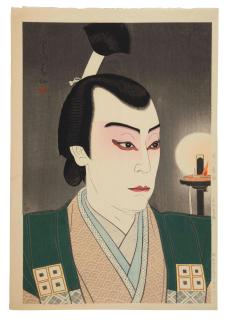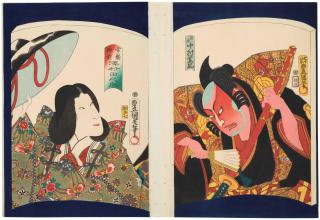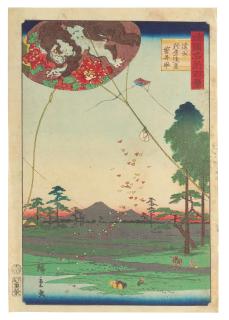- Art.Salon
- Artists
- Utagawa Hiroshige
- Edo period (1615-1868), 1855 and 1857

Utagawa Hiroshige
Edo period (1615-1868), 1855 and 1857
Found at
Bonhams,
London (Online Auction)
Japanese ArtPrinted, Painted and Sculpted (online-only), Lot 1006
28. May - 10. Jun 2024
Japanese ArtPrinted, Painted and Sculpted (online-only), Lot 1006
28. May - 10. Jun 2024
Estimate: XX.XXX
Price realised: XX.XXX
Price realised: XX.XXX
Description
UTAGAWA HIROSHIGE (1797-1858)
Edo period (1615-1868), 1855 and 1857
Six oban tate-e prints: five from the series Meisho Edo hyakkei (100 Famous Views of Edo), comprising: Oji Fudo no taki (Fudo Falls, Oji), Yoroi no watashi, Komai cho (Yoroi Ferry, Komai cho), Shichu hanei Tanabata matsuri (The City Flourishing Tanabata Festival), Ukeji Akiba no keidai (Inside Akiba Shrine, Ukeji), and Ryogoku Ekoin Moto-Yanagibashi (Ryogoku Ekoin and Moto-Yanagibashi Bridge), all published by Uoya Eikichi in 1857, all signed Hiroshige hitsu/ga; the last Ishiyakushi Yoshitsune sakura Noriyori no hokora (Ishiyakushi: Yoshitsune Cherry and Noriyori's Shrine) from the series Gojusantsugi meisho zue (Famous Sights of the 53 Stations), published by Tsutaya Kichizo in 1855, signed Hiroshige hitsu. The smallest: 35cm x 22.9cm (13¾in x 9in); the largest: 36cm x 24.3cm (14 1/8in x 9 9/16in). (6).
Edo period (1615-1868), 1855 and 1857
Six oban tate-e prints: five from the series Meisho Edo hyakkei (100 Famous Views of Edo), comprising: Oji Fudo no taki (Fudo Falls, Oji), Yoroi no watashi, Komai cho (Yoroi Ferry, Komai cho), Shichu hanei Tanabata matsuri (The City Flourishing Tanabata Festival), Ukeji Akiba no keidai (Inside Akiba Shrine, Ukeji), and Ryogoku Ekoin Moto-Yanagibashi (Ryogoku Ekoin and Moto-Yanagibashi Bridge), all published by Uoya Eikichi in 1857, all signed Hiroshige hitsu/ga; the last Ishiyakushi Yoshitsune sakura Noriyori no hokora (Ishiyakushi: Yoshitsune Cherry and Noriyori's Shrine) from the series Gojusantsugi meisho zue (Famous Sights of the 53 Stations), published by Tsutaya Kichizo in 1855, signed Hiroshige hitsu. The smallest: 35cm x 22.9cm (13¾in x 9in); the largest: 36cm x 24.3cm (14 1/8in x 9 9/16in). (6).


